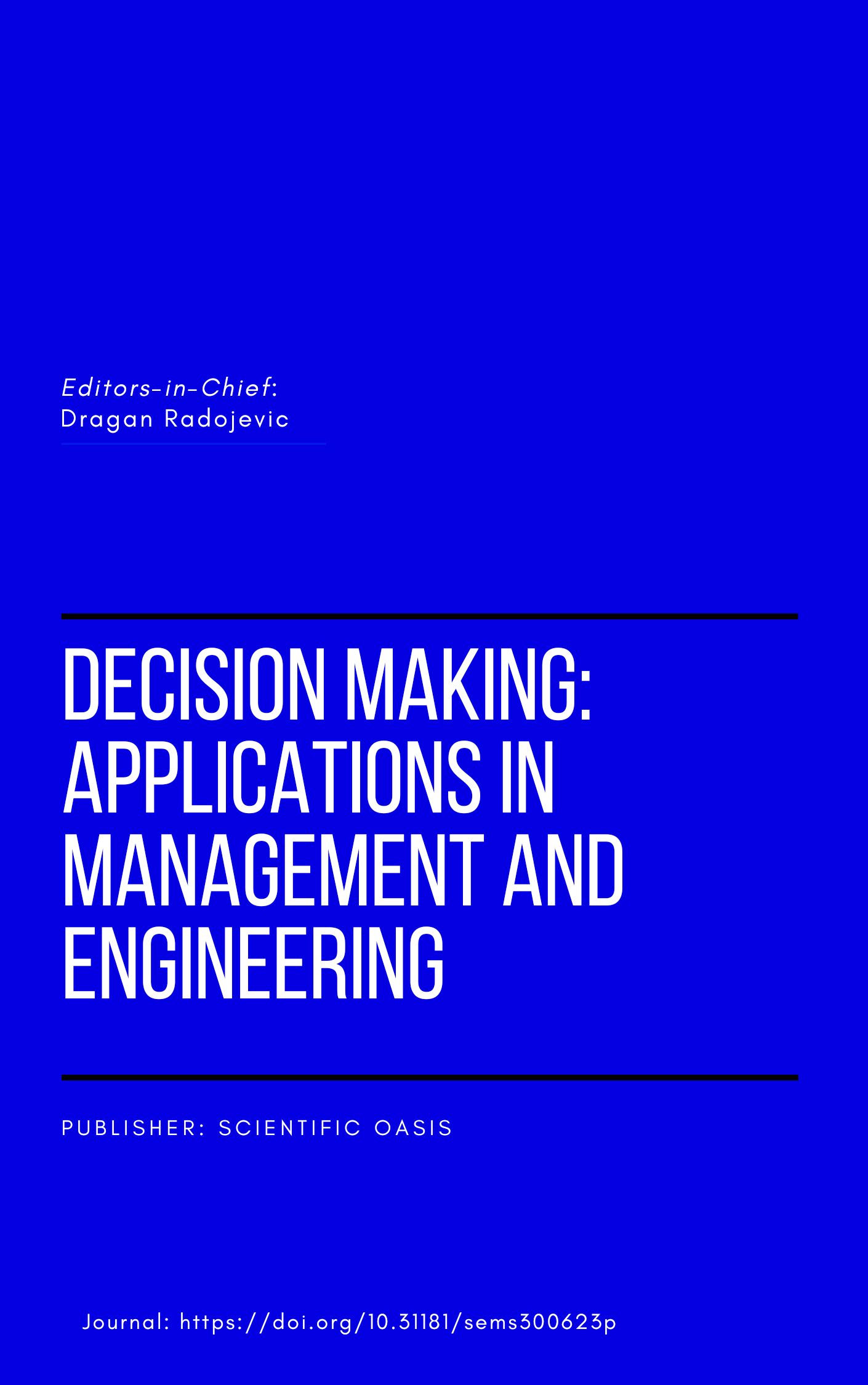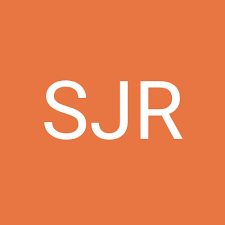A Decision-Making Framework for Enhancing Quality Performance through Quality Management Practices and Organizational Culture in Food Manufacturing
DOI:
https://doi.org/10.31181/dmame7220241364Keywords:
Decision-Making Framework, Quality Management Practices, Organizational Culture, Quality Performance, Food Manufacturing IndustryAbstract
This research presents a decision-making framework that merges quality management (QM) practices with organisational culture (OC) to improve quality performance (QP) in the food manufacturing industry. It explores how various types of OC impact the implementation of both core and infrastructure QM practices and how these relationships influence overall QP. Data were gathered using a structured questionnaire, which was distributed to a random sample of food manufacturing firms in Palestine. Partial Least Squares Structural Equation Modelling (PLS-SEM) was employed to analyse the data and test the proposed relationships. The Competing Values Framework (CVF) was utilised to assess organisational culture. The findings indicate that market and clan cultures significantly foster the adoption of core and infrastructure QM practices, respectively, while hierarchical culture plays a role in enhancing supplier involvement and information quality. Both core and infrastructure QM practices were found to have a positive impact on QP, with clan culture acting as a significant moderator between infrastructure practices and performance. This study provides an empirically supported model that connects culture-driven quality management with decision-making strategies for performance improvement, offering practical insights for managers in food manufacturing, especially within developing economies.
Downloads
References
[1] Al-Bitawi, W. (2019). Developing competitiveness and increasing the share of national products: Food sector. https://mas.ps/cached_uploads/download/migrated_files/20190204112258-1-1640017423.pdf
[2] Idrees, F. (2018). Quality Management and The Mediating Role of Organizational Culture To Enhance Firm Performance: A Study of Manufacturing Sector of Pakistan Bahria University, Islamabad]. http://prr.hec.gov.pk/jspui/bitstream/123456789/9997/1/Farrukh%20Idrees_Mngt%20Sci_2018_Bahria_PRR.pdf
[3] Patyal, V. S., & Koilakuntla, M. (2018). Impact of organizational culture on quality management practices: an empirical investigation. Benchmarking: An International Journal, 25(5), 1406-1428. https://doi.org/10.1108/bij-12-2016-0191
[4] Eniola, A. A., Olorunleke, G. K., Akintimehin, O. O., Ojeka, J. D., & Oyetunji, B. (2019). The impact of organizational culture on total quality management in SMEs in Nigeria. Heliyon, 5(8). https://www.cell.com/heliyon/fulltext/S2405-8440(19)35953-5
[5] Patyal, V. S., Ambekar, S., & Prakash, A. (2019). Organizational culture and total quality management practices in Indian construction industry. International Journal of Productivity and Performance Management, 69(5), 895-913. https://doi.org/10.1108/ijppm-10-2018-0368
[6] Cameron, K. S., & Quinn, R. E. (2005). Diagnosing and changing organizational culture: Based on the competing values framework,CA. John Wiley & Sons. https://webuser.bus.umich.edu/cameronk/PDFs/Organizational%20Culture/CULTURE%20BOOK-CHAPTER%201.pdf
[7] Zeb, A., Akbar, F., Hussain, K., Safi, A., Rabnawaz, M., & Zeb, F. (2021). The competing value framework model of organizational culture, innovation and performance. Business Process Management Journal, 27(2), 658-683. https://doi.org/10.1108/bpmj-11-2019-0464
[8] Botti, A., Vesci, M., & Paolo, G. (2018). Competing Value Framework and public administration: Managerial insights, theoretical reflections and practical implications from Italy. International Business Research, 11(2), 147-160. https://doi.org/10.5539/ibr.v11n2p147
[9] Naor, M., Goldstein, S. M., Linderman, K. W., & Schroeder, R. G. (2008). The Role of Culture as Driver of Quality Management and Performance: Infrastructure Versus Core Quality Practices*. Decision sciences, 39(4), 671-702. https://doi.org/10.1111/j.1540-5915.2008.00208.x
[10] Herzallah, A. M., Gutiérrez-Gutiérrez, L., & Munoz Rosas, J. F. (2014). Total quality management practices, competitive strategies and financial performance: the case of the Palestinian industrial SMEs. Total Quality Management & Business Excellence, 25(5-6), 635-649. https://doi.org/10.1080/14783363.2013.824714
[11] Asif, M. (2019). Exploring the role of core and infrastructure quality management practices in ambidexterity. Total Quality Management & Business Excellence, 30(9-10), 990-1004. https://doi.org/10.1080/14783363.2017.1344549
[12] Abdallah, A. B. (2013). The influence of" soft" and" hard" total quality management (TQM) practices on total productive maintenance (TPM) in Jordanian manufacturing companies. International Journal of Business and Management, 8(21), 1. https://doi.org/10.5539/ijbm.v8n21p1
[13] Gadenne, D., & Sharma, B. (2009). An investigation of the hard and soft quality management factors of Australian SMEs and their association with firm performance. International Journal of quality & reliability management, 26(9), 865-880. https://doi.org/10.1108/02656710910995064
[14] Munizu, M. (2013). The Impact of total quality management practices towards competitive advantage and organizational performance: Case of fishery industry in South Sulawesi Province of Indonesia. Pakistan Journal of Commerce and Social Sciences (PJCSS), 7(1), 184-197. https://www.econstor.eu/handle/10419/188084
[15] Psomas, E. L., Fotopoulos, C. V., & Kafetzopoulos, D. P. (2011). Core process management practices, quality tools and quality improvement in ISO 9001 certified manufacturing companies. Business Process Management Journal, 17(3), 437-460. https://doi.org/10.1108/14637151111136360
[16] Gotzamani, K. D., & Tsiotras, G. D. (2001). An empirical study of the ISO 9000 standards’ contribution towards total quality management. International Journal of Operations & Production Management, 21(10), 1326-1342. https://doi.org/10.1108/EUM0000000005972
[17] Zu, X. (2009). Infrastructure and core quality management practices: how do they affect quality? International Journal of Quality & Reliability Management, 26(2), 129-149. https://doi.org/10.1108/02656710910928789
[18] Zeng, J., Phan, C. A., & Matsui, Y. (2013). Supply chain quality management practices and performance: An empirical study. Operations Management Research, 6(1-2), 19-31. https://doi.org/10.1007/s12063-012-0074-x
[19] Javed, S. (2015). Impact of top management commitment on quality management. International Journal of Scientific and Research Publications, 5(8), 1-5. https://www.ijsrp.org/research-paper-0815/ijsrp-p4453.pdf
[20] Bakotić, D., & Rogošić, A. (2017). Employee involvement as a key determinant of core quality management practices. Total Quality Management & Business Excellence, 28(11-12), 1209-1226. https://doi.org/10.1080/14783363.2015.1094369
[21] Yaacob, Z. (2014). The link between quality management and muslim customer satisfaction. International Journal of Business & Society, 15(1).
[22] Choi, Y. S., Seo, M., Scott, D., & Martin, J. (2010). Validation of the organizational culture assessment instrument: An application of the Korean version. Journal of sport management, 24(2), 169-189. https://doi.org/10.1123/jsm.24.2.169
[23] Taouab, O., & Issor, Z. (2019). Firm performance: Definition and measurement models. European Scientific Journal, 15(1), 93-106. https://doi.org/10.19044/esj.2019.v15n1p93
[24] Kumar, P., Raju, N., & Kumar, M. (2016). Quality of quality definitions-an analysis. International Journal of Scientific Engineering and Technology, 5(3), 142-148. https://doi.org/10.17950/ijset/v5s3/304
[25] Arda, O. A., Bayraktar, E., & Tatoglu, E. (2019). How do integrated quality and environmental management practices affect firm performance? Mediating roles of quality performance and environmental proactivity. Business strategy and the environment, 28(1), 64-78. https://doi.org/10.1002/bse.2190
[26] Quinn, R. E., & McGrath, M. R. (1985). The transformation of organizational cultures: A competing values perspective. https://psycnet.apa.org/record/1986-97980-016
[27] Song, Y., Son, Y.-J., & Oh, D. (2015). Methodological Issues in Questionnaire Design. Journal of Korean Academy of Nursing, 45(3), 323. https://doi.org/10.4040/jkan.2015.45.3.323
[28] Flynn, B. B., Schroeder, R. G., & Sakakibara, S. (1995). The impact of quality management practices on performance and competitive advantage. Decision sciences, 26(5), 659-691. https://doi.org/10.1111/j.1540-5915.1995.tb01445.x
[29] Mastor, S. H., & Ibrahim, N. (2012, 2012/09). Quality management (QM) practices in Facilities Management (FM) organisation: A case study in Malaysia 2012 IEEE Symposium on Business, Engineering and Industrial Applications, http://dx.doi.org/10.1109/isbeia.2012.6422967
[30] Imran, M., Abdul Hamid, S. N., & Aziz, A. (2018). The influence of TQM on export performance of SMEs: Empirical evidence from manufacturing sector in Pakistan using PLS-SEM. Management Science Letters, 8, 483-496. http://doi.org/10.5267/j.msl.2018.3.003
[31] Azeem, M., Ahmed, M., Haider, S., & Sajjad, M. (2021). Expanding competitive advantage through organizational culture, knowledge sharing and organizational innovation. Technology in Society, 66, 101635. https://doi.org/10.1016/j.techsoc.2021.101635
[32] Hair, J. F., Risher, J. J., Sarstedt, M., & Ringle, C. M. (2019). When to use and how to report the results of PLS-SEM. European business review, 31(1), 2-24. https://doi.org/10.1108/EBR-11-2018-0203
[33] Wong, K. K.-K. (2013). Partial least squares structural equation modeling (PLS-SEM) techniques using SmartPLS. Marketing bulletin, 24(1), 1-32. http://www.researchgate.net/publication/268449353
[34] Ab Hamid, M. R., Sami, W., & Sidek, M. M. (2017). Discriminant validity assessment: Use of Fornell & Larcker criterion versus HTMT criterion. Journal of physics: Conference series,
[35] Fornell, C., & Larcker, D. F. (1981). Evaluating structural equation models with unobservable variables and measurement error. Journal of marketing research, 18(1), 39-50. https://doi.org/10.1177/002224378101800104
[36] García-Bernal, J., & Ramírez-Alesón, M. (2015). Why and how TQM leads to performance improvements. Quality Management Journal, 22(3), 23-37. https://doi.org/10.1080/10686967.2015.11918439
[37] F. Hair Jr, J., Sarstedt, M., Hopkins, L., & G. Kuppelwieser, V. (2014). Partial least squares structural equation modeling (PLS-SEM). European business review, 26(2), 106-121. https://doi.org/10.1108/EBR-10-2013-0128
[38] Green, K. W., Inman, R. A., Sower, V. E., & Zelbst, P. J. (2019). Impact of JIT, TQM and green supply chain practices on environmental sustainability. Journal of Manufacturing Technology Management, 30(1), 26-47. https://doi.org/10.1108/JMTM-01-2018-0015
[39] Tenenhaus, M., Vinzi, V. E., Chatelin, Y.-M., & Lauro, C. (2005). PLS path modeling. Computational Statistics & Data Analysis, 48(1), 159-205. https://doi.org/10.1016/j.csda.2004.03.005
[40] Wetzels, Odekerken, S., & van, O. (2009). Using PLS Path Modeling for Assessing Hierarchical Construct Models: Guidelines and Empirical Illustration. MIS Quarterly, 33(1), 177. https://doi.org/10.2307/20650284
[41] Douglas, T. J., & Judge Jr, W. Q. (2001). Total quality management implementation and competitive advantage: the role of structural control and exploration. Academy of Management journal, 44(1), 158-169. https://doi.org/10.5465/3069343
[42] Cohen, J. (1988). Statistical Power Analysis for the Behavioral Sciences (2nd ed.). Routledge. https://doi.org/10.4324/9780203771587
[43] Prajogo, D. I., & McDermott, C. M. (2005). The relationship between total quality management practices and organizational culture. international Journal of operations & production management, 25(11), 1101-1122. https://doi.org/10.1108/01443570510626916
Downloads
Published
How to Cite
Issue
Section
License
Copyright (c) 2025 Decision Making: Applications in Management and Engineering

This work is licensed under a Creative Commons Attribution 4.0 International License.












